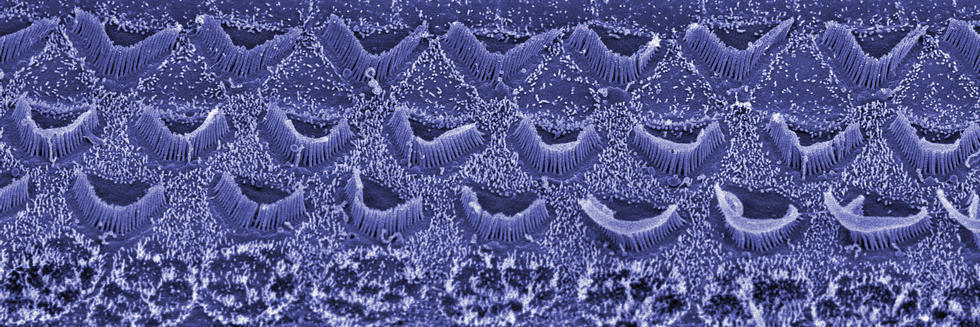
Our lab’s research focuses on hair cells, which are the sensory cells of the inner ear. Hair cells detect sub-nanometer vibrations, induced by sounds or acceleration forces, with a bundle of precisely organized ‘hairs’, called stereocilia. Often inherited deafness or vestibular impairment is caused by malfunction of a protein, important for bundle’s function, resulting in abnormalities of bundle morphology and/or function.
We study the role of proteins that form and maintain stereocilia to better understand their place in bundle’s integrity and maintenance. Several such proteins, critical for stereocilia function, form the hair cell mechanotransduction complex, which converts sound to an electrical signal our brain can understand. Malfunction of many of these proteins causes Usher syndrome, a devastating disease that affects both hearing and vision. We use state-of-the-art electrophysiology, optical microscopy, and electron microscopy techniques to better understand the function of the individual proteins within the complex and to develop new gene therapy methods to treat Usher syndrome in both the ear and eye.
Another closely tied direction in the lab is to identify and study proteins that form stereocilia surface specializations. These are proteins that form transient and permanent stereociliary links which hold the bundle together, connect stereocilia with the kinocilium, the tectorial membrane, and form the functionally distinct stereociliary surface coat. We have identified a list of candidate proteins predicted to have at least one transmembrane domain, and a large (over 1500 amino acids) extracellular domain. We have successfully localized some of these candidates to the surface of stereocilia, and are actively investigating their function within the stereocilia bundle.
